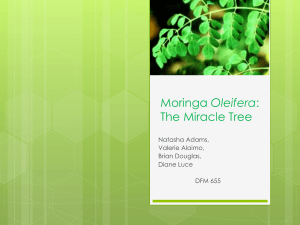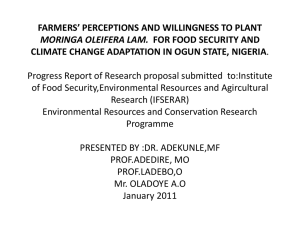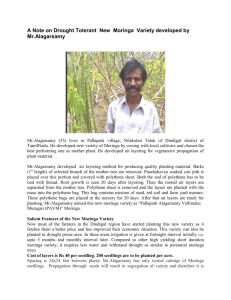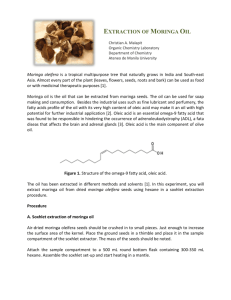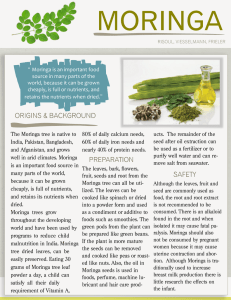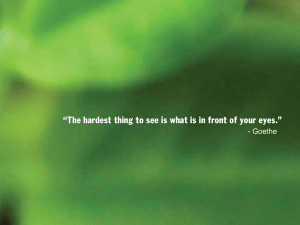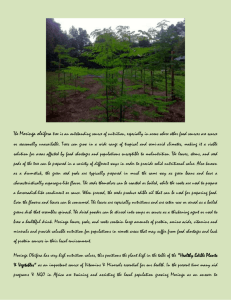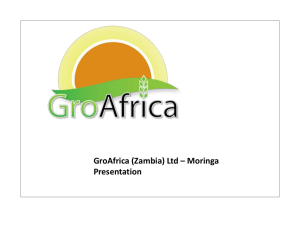Miracle Trees
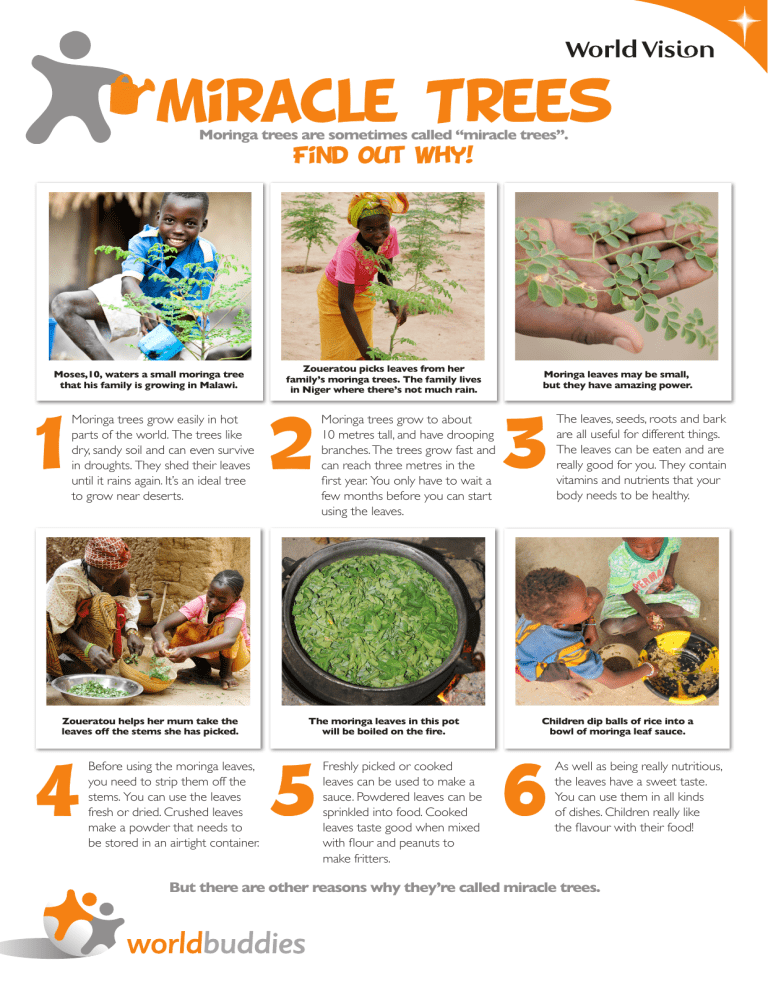
Miracle Trees
Moringa trees are sometimes called “miracle trees”.
Find out why!
Moses,10, waters a small moringa tree that his family is growing in Malawi.
Zoueratou picks leaves from her family’s moringa trees. The family lives in Niger where there’s not much rain.
Moringa leaves may be small,
but they have amazing power.
1 Moringa trees grow easily in hot parts of the world. The trees like dry, sandy soil and can even survive in droughts. They shed their leaves until it rains again. It’s an ideal tree to grow near deserts.
2 Moringa trees grow to about
10 metres tall, and have drooping branches. The trees grow fast and can reach three metres in the first year. You only have to wait a few months before you can start using the leaves.
3 The leaves, seeds, roots and bark are all useful for different things.
The leaves can be eaten and are really good for you. They contain vitamins and nutrients that your body needs to be healthy.
Zoueratou helps her mum take the leaves off the stems she has picked.
The moringa leaves in this pot will be boiled on the fire.
Children dip balls of rice into a bowl of moringa leaf sauce.
4 Before using the moringa leaves, you need to strip them off the stems. You can use the leaves fresh or dried. Crushed leaves make a powder that needs to be stored in an airtight container.
5 Freshly picked or cooked leaves can be used to make a sauce. Powdered leaves can be sprinkled into food. Cooked leaves taste good when mixed with flour and peanuts to make fritters.
6 As well as being really nutritious, the leaves have a sweet taste.
You can use them in all kinds of dishes. Children really like the flavour with their food!
But there are other reasons why they’re called miracle trees.
4
times the calcium of
cow’s milk
Leaves with power
Moringa leaves are good for children who don’t have enough of the right food they need to grow.
Moringa leaves contain...
Who
knew
this moringa tree had
so much power!
7 times the vitamin C of oranges
3 times the potassium of bananas
4 times the vitamin A of carrots
2
times the protein of
cow’s milk
Powder made from dried moringa leaves is even better! Drying the leaves removes the water and this doubles or triples most of these important nutrients.
One tablespoon of moringa leaf powder per serving of food
= ALL the protein and nutrients missing when you eat food only made from grains.
Eating well
think spot
#
16
Sometimes we forget how important it is to eat food that is good for us. When we eat unhealthy food, or not enough good food, it affects how our bodies work.
Kadiatou’s story
Kadiatou’s mum was sad when she found out that her daughter wasn’t getting enough food. Kadiatou was always sick and cried a lot. World Vision gave them some moringa trees and showed the family how to look after them. Kadiatou’s mum also learned how to made nutritious food with the moringa leaves. Now Kadiatou is healthy again.
“I could
see
the difference in
Kadiatou after
two weeks.
”
Kadiatou’s mother
“I have
seen
the difference that the moringa tree has made.
Our children are
well-nourished
, and they are learning better and have more energy.”
Kadiatou’s father
CHAllenge
• Write down, draw or cut out pictures of all the healthy foods you like to eat. See if you can get up to 20!
• Put circles around the five healthy foods you like the most.
• Think about Kadiatou’s story and ask five people Why do we need to eat healthy food?
Now write your own answer in this speech bubble.
Why do we need to eat healthy food?
I think we need to eat healthy food because...
Dear WorldBuddy
#
16
1 Tell your Worldbuddy about your favourite kind of healthy
Remember that they might not have seen or eaten this kind of food.
2 Draw a picture showing how you keep healthy.
Add labels to tell them what you have drawn.
3 Ask about their favourite food. It might be something that they only eat on special occasions.
Sponsored child’s full name:
Sponsored child’s sponsorship number:
Date:
Dear…
My favourite kind of healthy food is…
Here’s a picture showing how I keep healthy.
The things I do are…
What is your favourite food and when do you eat it?
[Write your own message to your Worldbuddy]
From…
World Vision Zambia
PO Box 31-083
Lusaka
ZAMBIA
3.
When you mail your letter remember to:
1.
Find the page in your sign-up pack with your sponsored child’s picture on it.
This is where you find their name, their reference number and the address to post your letter.
2.
Write your sponsored child’s full name and sponsorship number:
4.
• at the top of your letter, and
• on the back of the envelope
On the front of the envelope, write the address of the World Vision office for the country where your sponsored child lives.
NEVER write your personal address details on any letters or messages.

